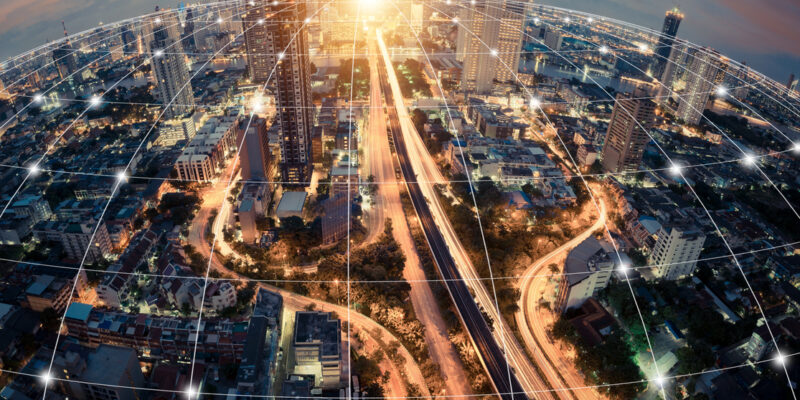With rising gas prices and increased concerns about climate change, many are turning to electric vehicles to protect their wallets and the planet. However, scientists and construction engineers have been working hard on another part of the transportation equation: smart roads.
While the technology is still being refined by scientists and construction engineers around the world, the smart road concept uses digital technology, IoT, and fiber optic connectivity within their foundation. Using wifi, 5G, the cloud, and in-road sensors, smart roads will allow for a multitude of improvements for all drivers, whether their cars use electricity or gas. Benefits include:
1. Less Traffic and Congestion
smart roads will be able to collect and analyze data in almost real time. When used in conjunction with smart stop lights, they could adjust lights based on current traffic conditions, decreasing slow downs and bumper-to-bumper traffic.
2. Increased Safety
Pedestrian deaths have increased by 46% over the last ten years. Using image processing, AI, and object recognition software, smart roads can broadcast information to vehicles on both roads that make up an intersection, allowing drivers increased awareness of pedestrians, bicyclists, and others who may be in danger of being in a turning driver’s blind spot.
3. Increased Connectivity
With smart roads constantly connecting data, drivers will be able to get updated information on the best routes to avoid traffic and slowdowns. Smart parking apps could also show drivers where spaces are available, ending the time spent fruitlessly circling city blocks looking for a spot.
4. Decreased Emergency Response Times
By monitoring traffic and slow downs, emergency responders could know when and where an accident occured, and synchronized traffic lights with emergency vehicles would decrease response times by 20-35%.
5. Energy Harvesting
Developing smart road technology would allow energy to be harnessed from the vibrations of passing cars or sunlight. This energy would then be returned to the electric power grid and used to power traffic lights, signs, and street lights.
6. No Weigh Stations
The development of high speed, weigh-in motion technology would allow for trucks and other large vehicles to be weighed while they are on the move. They would also provide weight enforcement screenings for toll roads, bridge loads, and traffic control data.
7. EV Charging
For drivers of electric and hybrid cars, smart roads could also allow charging while driving. This would also increase the availability of public transportation, as electric buses could run all the time without having to stop. Smart pavement, created by incorporating metal coils in pads of concrete, could charge EVs wirelessly as drivers go about their day.
One of the biggest challenges to the creation of smart roads is the ability to process large amounts of data from multiple sources in real time, but many of these technologies are already in testing and are expected to be released to cities worldwide in the next few coming years.
As more cities convert to this exciting technology, more workers will be needed to build the roads and other elements of smart cities. When that time comes, Steadfast Entities, LLC will be ready with the latest products, trained staff, and equipment rentals to meet all of your construction needs.

